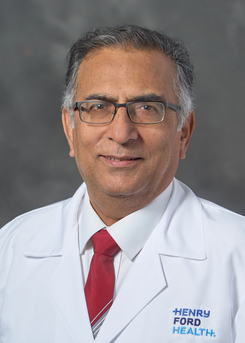Glioma Biology Laboratory
Currently, our laboratory examines glioma vascular normalization by radiation therapy to determine the optimal time window for chemotherapy administration. We also investigate the biophysical forces exerted by proliferating gliomas on the surrounding brain tissue, effecting treatment efficacy and post-resection recurrence patterns.
Other ongoing efforts in our laboratory have led to: (1) The first reported preclinical model of MRI-guided, real time application of laser interstitial thermal therapy (LITT) for glioma ablation. Which a is clinical, cytoreductive approach often used for recurrent glioma. With this research, we have developed an analogous animal model that is useful for evaluating novel adjuvant treatments for this fatal disease. (2) The development of other preclinical animal brain tumor models from human glioma tissue that mimic the human disease both phenotypically and genotypically.
Collaborative efforts with colleagues from Michigan State University (MSU), funded by HFH-MSU Cancer Research Initiative, are focused on: (1) enhancing LITT efficacy through Prussian Blue-coated, phototheranostic exosomes, derived from the glioma cells; (2) optimizing drug delivery to brain tumors by near infrared (NIR) stimulation; (3) local magnetic field-induced focusing of untethered, biodegradable microrobots to administer brain tumor hyperthermia. In several of these studies, we also work with researchers and clinicians from the departments of Neurosurgery, Neurology and Radiation Oncology.
For Research Collaborations
The following survey collects information about the resources that you would like to request from the Hermelin Brain Tumor Center. This initial information will be reviewed by our committee to determine whether the resources you need are available and appropriate next steps. Take the survey.
Principal Investigator
Tavarekere N. Nagaraja, PHD, FAHA

Specialties: Research
Services: Fellow of the American Heart Association (FAHA)
Education
PhD, Neurophysiology with a dissertation on Neurobehavioral Toxicology, National Institute of Mental Health and Neuro Sciences, Bangalore, India, 1992
MSc, Zoology with Comparative Animal Physiology as the major, Bangalore University, India, 1983
About Me
Member of the Henry Ford Cancer Institute
Research Interest
Delivering treatments to diseases that affect primarily the brain has been proven difficult. This is due to the specialized nature of blood vessels in the brain that do not permit entry by substrates in blood, except nutrients and oxygen. This control is necessary for normal brain function, since brain cells are sensitive to even small changes in their environment. However, in other disease conditions such as stroke, traumatic brain injury and brain tumors, most drug molecules are also thwarted from entering the brain, making timely drug delivery to these diseases nearly impossible. As a result, these patient populations have high mortality rates. The status of neuronal cells in these diseases has been the focus of past research, but now there is a need to home in on their interactions, blood supply and other supporting cells to clarify disease processes. Such interactions can be unique to a given altered brain condition and must be understood in the context of that disease, but our findings may offer a broader range of treatment targets.
For the past 20+ years, my research has focused on understanding changes to brain blood vessel function using animal models of stroke and brain tumors. As a neuroscientist, I have a broad background in magnetic resonance imaging (MRI) of the brain, quantitative autoradiography and fluorescence microscopy. These are combined with a variety of histological and biochemical methods with improved functional outcomes as the primary endpoint. Some of the MRI methods we developed for animal brain scanning have been used in translational studies for human brain imaging. My research has primarily focused on: 1) the vascular pathophysiology of stroke and primary brain tumors such as glioma; 2) vascular protective therapies for stroke; and 3) mechanisms of vascular normalization to improve drug delivery to brain tumors.
I have authored over 60 peer-reviewed publications and 5 book chapters. I also serve as a manuscript reviewer for several peer-reviewed journals, and as a grant reviewer for several funding organizations including American Heart Association, National Institutes of Health, India Alliance DBT Wellcome Trust, California Northstate University College of Pharmacy and the Netherlands Technology Foundation.
.svg?iar=0&hash=F6049510E33E4E6D8196C26CCC0A64A4)

/hfh-logo-main--white.svg?iar=0&hash=ED491CBFADFB7670FAE94559C98D7798)